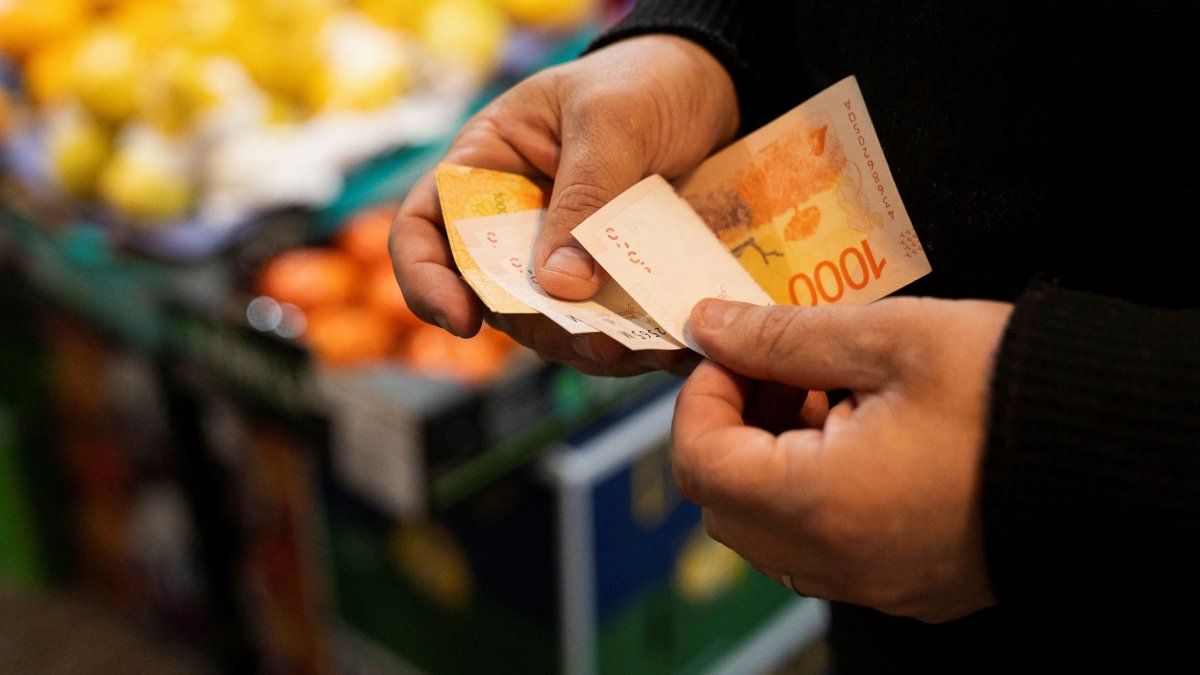0% is the second best record after the 1% deflation of the last week of Aprilbut the resurgence of inflation that was seen as a result of the rise in the prices of financial dollars starting in the last half of May led to a second consecutive acceleration, after the 1.6% that was seen in the third and 2nd .3% from the last week of May.
Thus, despite the fact that in the first week there was no price variation, in the accumulated monthly, there was another increase that left the index at 2.6%, the highest percentage since the fourth week of April.
inflation-june-lcg.png
As in the previous two weeks, the end-to-end measurement once again exceeded the average, standing at 3.4%.
In the weekly measurement, lThe variations of distributed in halves, with increases above the average in Oils (3.4%), Fruits and Dairy Products and Eggs (2.5% in both cases), Meats (1%) and Vegetables (0.1%), being below Ready-to-Go Meals (-0. 1%), Condiments and other food products (-1.4%), Baked goods, cereals and pastas (-1.7%), Beverages and infusions to consume at home (-2.7%) and Sugar, honey, sweets and cocoa (-3.5%).
The same distribution took place in the measurement of the accumulated of the last four weekswith increases that exceeded 2.6% in Condiments and other food products (5.6%), Dairy products and eggs (4.9%), Beverages and infusions to consume at home (4.4%), Products of bread, cereals and pasta (3.3%) and Vegetables (2.8%).
Likewise, with variations lower than the average were Ready-to-go meals (2.3%), Sugar, honey, sweets and cocoa (2.1%), Meats (2%), Oils (0.6%) and Fruits (- 9.4%).
Regulated prices will put upward pressure on the CPI
The doubts that now appeared among economists are about the impact that the rate increase will have of electricity and gas that the government is going to launch starting this month, gradually until December, with the aim of eliminating the fiscal deficit.
A report of the Capital Foundation states that “with pending relative price adjustments, disinflation will find a brake in the third quarter.”
“Although the month of May would have closed around 5% monthly, the lowest record since 2022, this occurred in a framework of postponement of tariff adjustments (-2.3 points) that“It is unlikely to be sustained for many months, given the authorities’ goal of zero fiscal deficit,” the work warns.
The study maintains that “with salaries that could begin to catch up with inflation, an exchange gap that cannot be ruled out once again showing some sign of tension, fuel increases already scheduled, possible increases in rates for regulated services and second round effects “It seems difficult to break the general inflation record of 4% monthly towards the second semester.”
Rodolfo Santángelo: “how to lose weight, the first 5 kilos are easy”
Likewise, the economist Rodolfo Santángelo questioned whether the pace of inflation decline that was recorded from December to May will be maintained from June onwards and warned that the fiscal surplus will also be reduced during the second half of the year.
“The million dollar question is the speed of fall from now on. It’s like losing weight. The first five kilos are easythe second are much more difficult and so now (with inflation) it will be from 6% to 5%, then 4% to reach 3%,” Santangelo gave as an example in radio statements.
The partner of Carlos Melconian in private activity I consider that “This program urgently needs to go to 2% monthly, “What is it that is devaluing the peso every month, and what we do not know is the speed of the fall, because the longer it takes, the more accumulated problems there will be in the future.”
The most logical path to lower prices
As he indicated, the reduction in prices must be carried out “without entering into the traps of freezing the electricity, gas, transportation or gasoline rates so that prices do not rise because disinflation does not mean freezing rates,” he stressed.
According to the last Central Bank Market Expectations Survey (REM), the 36 consulting firms that participated in it estimated a monthly inflation of 5.2% for May while for June they projected 5.5%. Regarding the Core CPI, the forecasts for May are 5% and for June 4.8%.
If you look at the following months, the general price index in July would rise and would be 5.5%; in August, 5.2%; in September, 5.3%; in October, 4.6% and for November 4.5% is expected.
Source: Ambito




